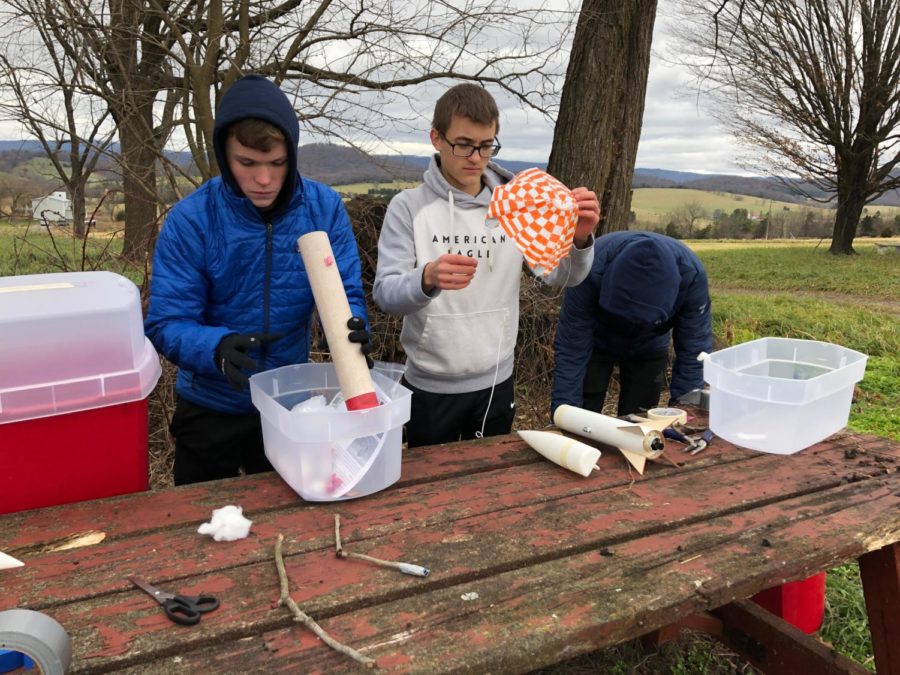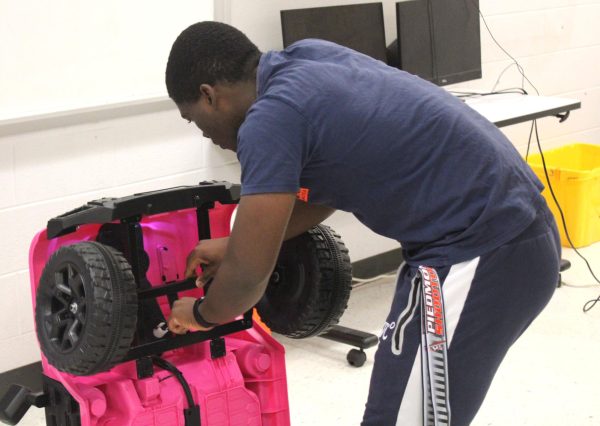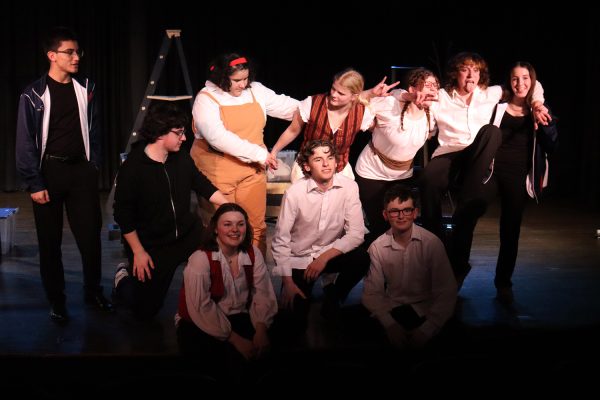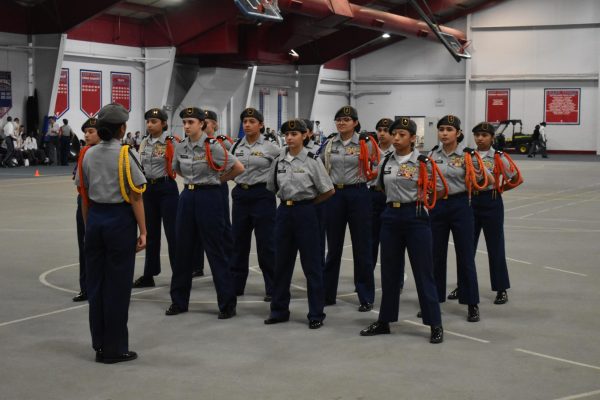Engineering students learn from first TARC practice launch
Engineering II and DE Engineering classes both focus on one main project for the majority of the course: the Team America Rocketry Challenge (TARC). TARC is a national competition centered around the building of model rockets. Participants are given a goal flight time, apogee (highest altitude), weight, length and mass. The rocket also needs to meet the requirements of safely carrying three raw eggs.
Tuesday, Dec. 4, the Engineering II and DE Engineering classes traveled to Linville for their first practice launch. Sophomore Alex Macauley, part of the team Flies Like A Penguin, successfully launched his rocket.
“I thought that the launch actually went pretty well. We had a different motor then we planned to use, and in OpenRocket it said it would only go 201 meters, and when we took the altimeter out, it read exactly what the simulation had said,” Macauley said. “Even though we didn’t get the ideal time for the competition, we got the ideal time and apogee for our first test flight, especially with the motor that we had.”
Sophomore Thomas Shulgan, part of the team David’s Disciples, had arguably the most successful launch of the day. His team achieved almost perfect scores in every category, although they suffered from a disqualifying failed parachute deployment.
“The launch went really well, we were just three feet off the official goal, which was really good. We definitely didn’t think it would go that well, but it went good,” Shulgan said.
Due to technical difficulties and time constraints at the launch site, only three groups were able to launch for the first practice. Sophomore Ryan Muncy, part of Team America, spent the day preparing to launch, but, as the group ran out of time, was denied the chance for a practice flight.
“It was useful to be able to see what worked for other groups and what didn’t, so that way we can get an idea of what went wrong for them and see if we might have those problems in our own rocket,” Muncy said.
The practice launch was a learning experience for everyone, particularly sophomore Nicholas Breeden, part of the team Paperclips.
“Since the body tube was very thick, I guess the ejection charge wasn’t able to push the tubes apart easily. We were using a different motor then we were planning on using, it had one second more delay,” Breeden said. “I believe one of our fins was also crooked, so that is probably what caused the curve of the rocket.”








